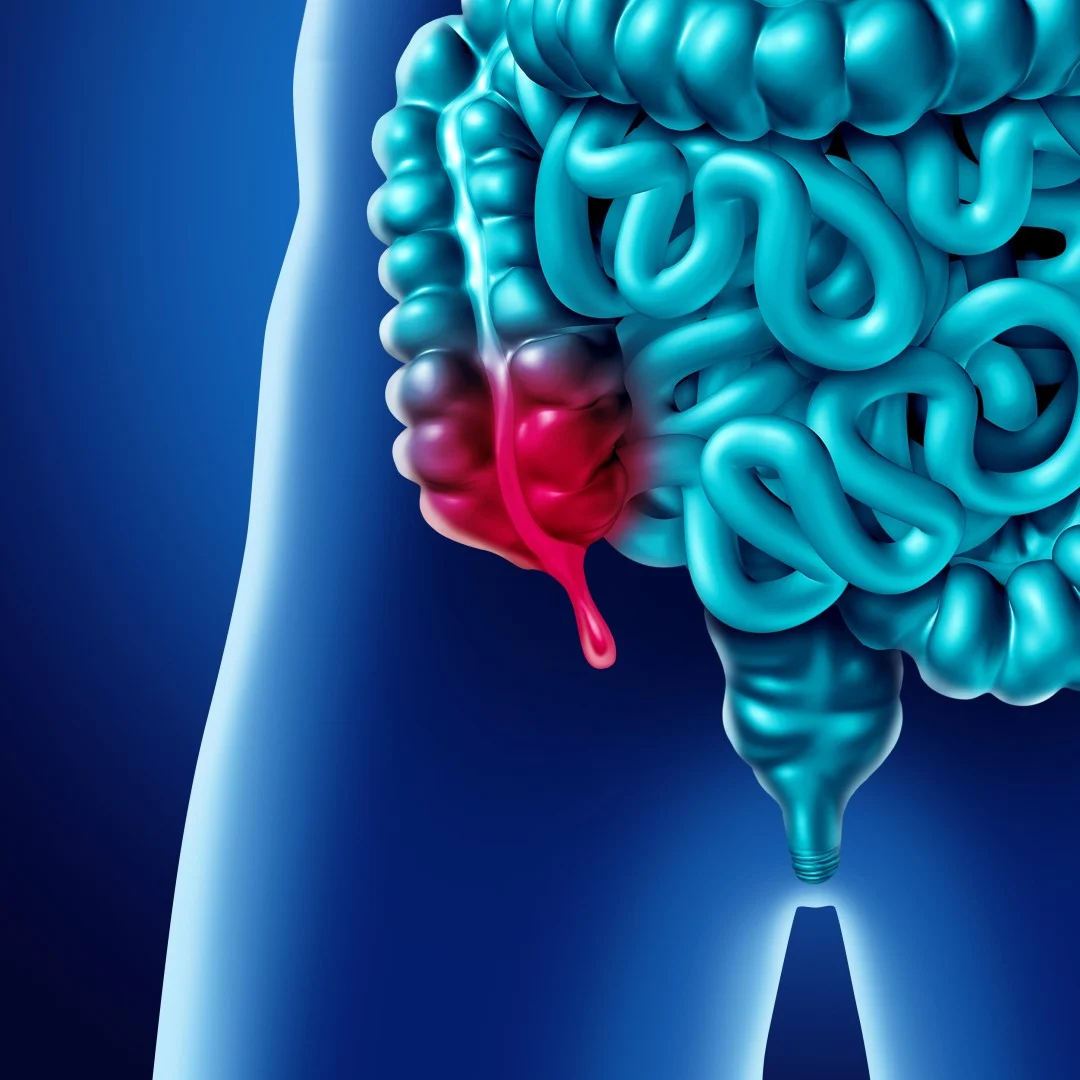Appendix Anatomy, Appendix Functions, Appendix Conditions, Appendix disorders, Appendix treatment, Appendicitis, Appendicitis symptoms
Appendix- Anatomy, Functions and Conditions
Appendix is a vestigial hollow tube that is closed at one end and is attached at the other end to the cecum, the pouchlike beginning of the large intestine. Its function has traditionally been a topic of debate. Here you will learn about its anatomy, physiology and disorders.

Appendix Overview
The vermiform appendix or the appendix is a pouch-like structure that can be found attached to the large intestine. The large intestine, as we all know, is the portion of the digestive system where the small intestine ends and empties all its content for final absorption and excretion. It is 8-10 cm long and 1.5 cm wide. It has a small cavity that narrows down and closes when it joins the large intestine. As per the appendix structure, it has muscular walls that were supposed to be used for expelling mucus secretion.
As per its anatomical shape, it can be found attached to the cecum, the first part of the large intestine that connects with the small intestine. The small elongated pouch-like structure protruding from the cecum wall is called the vermiform appendix.
The function of this organ has been a topic of debate for researchers and health experts. This is the reason why the appendix is considered to be a vestigial organ. As per research and conclusions, this organ was used as a harvesting location for gut flora and fauna. This is why it is thought to be the rebooting system for the digestive system as it might have been used to restore the gut flora and fauna. When the digestive system is hit by a parasitic microbial invasion, this part is suspected to be restoring the gut and stabilizing the colonies of the friendly bacteria residing in the digestive system.
There is general agreement among scientists that the appendix is gradually disappearing from the human species over evolutionary time. Blockage of the appendix can lead to appendicitis, a painful and potentially dangerous inflammation.
Appendix Anatomy
The appendix is closed at one end and attached at the other end to the cecum, a pouchlike beginning of the large intestine into which the small intestine empties its contents. The appendix is usually 8 to 10 cm (3 to 4 inches) long and less than 1.3 cm (0.5 inch) wide. The cavity of the appendix is much narrower where it joins the cecum than it is at its closed end. The appendix has muscular walls that are ordinarily capable of expelling into the cecum the mucous secretions of the appendiceal walls or any of the intestinal contents that have worked their way into the structure. If anything blocks the opening of the appendix or prevents it from expelling its contents into the cecum, appendicitis may occur.
Proposed Functions of the Appendix
As per the physiology of appendix, the researchers suggest that it was the birthplace of friendly bacteria residing and helping humans to maintain a proper digestive function symbiotically. When any digestive disorder occurred, this organ regenerated the gut flora and fauna and restored the gut functions properly.
It has also been proposed by observing the appendix anatomy that it might have been the cradle for the production of the endocrine cells in the fetal condition. The endocrine cells are important for the formation and secretion of different biochemical compounds that are important for the functioning and growth of different organs in a growing child inside the mother’s womb. The researchers also suggest that the appendix functioned as the organ for maintaining homeostasis. (Source)
As per another analogy of the anatomy and physiology of appendix, this organ might have been a part of the human immune system. Scientists suggest that it can also have performed as an organ restoring the immune system balance by producing leukocytes in response to the presence of antigens. It might have helped the formation of antibodies for the overall protection of the organ systems from any infection. The appendix might have played an important role in modulating the immune response of the human body.(Source)
Appendix Disorders and related health conditions
When the opening of the appendix is blocked or if for some reason, the appendix is unable to expel its content, appendicitis may occur.
The most common obstruction in the opening is a fecalith, a hardened piece of fecal matter.
Swelling of the lining of the appendiceal walls themselves can also block the opening.
When the appendix is prevented from emptying itself, a series of events occurs. Fluids and its own mucous secretions collect in the appendix, leading to edema, swelling, and the distention of the organ. As the distention increases, the blood vessels of the appendix become closed off, which causes the necrosis (death) of appendiceal tissue.
Meanwhile, the bacteria normally found in this part of the intestine begin to propagate in the closed-off pocket, worsening the inflammation.
The appendix, weakened by necrosis and subject to increasing pressure from within by the distention, may burst, spilling its contents into the abdominal cavity and infecting the membranes that line the cavity and cover the abdominal organs (peritonitis). Fortunately, peritonitis is usually prevented by the protective mechanisms of the body. The omentum, a sheet of fatty tissue, often wraps itself around the inflamed appendix, and an exudate that normally develops in the areas of inflammation behaves like glue and seals off the appendix from the surrounding peritoneal cavity.
Symptoms of Appendicitis
A person experiencing an attack of appendicitis may feel pain all over the abdomen, only in the upper abdomen, or about the navel. This pain is usually not very severe. After one to six hours or more the pain may become localized to the right lower abdomen. Nausea and vomiting may develop sometime after the onset of the pain. Fever is usually present but is seldom high in the early phases of the attack. The patient’s leukocytes (white blood cells) are usually increased from a normal count of 5,000–10,000 in an adult to an abnormal count of 12,000–20,000; this phenomenon can be caused by many other acute inflammatory conditions that occur in the abdomen.
In a person with a normally sited appendix, the pain of appendicitis is situated at a point between the navel and the front edge of the right hipbone. But many people have the appendix lying in an abnormal position and may feel the pain of an appendicitis attack in a different or misleading location, which makes their symptoms difficult to distinguish from the abdominal pain caused by a variety of other diseases.
Appendicitis Diagnosis and Treatment
Careful diagnostic examination by a physician can usually determine if acute appendicitis is indeed causing a patient’s abdominal pain. Ultrasound or computed tomography (CT) scanning may also be useful in the diagnosis of appendicitis.
The basic treatment of appendicitis is the surgical removal of the appendix in a minor operation called an appendectomy. The operation itself requires little more than a half hour under anesthesia and produces relatively little postoperative discomfort. If a diagnosis of acute appendicitis cannot immediately be made with reasonable certainty, it is common to wait and observe the patient’s symptoms for a period from 10 to 24 hours so that a definitive diagnosis can be made. This wait does slightly increase the risk that the appendix will rupture and peritonitis set in, so the patient is kept under careful medical surveillance at this time.
When to see a doctor
While the appendix is considered a vestigial organ, any disorder related to it can cause overall health complications. Consult with your healthcare provider for diagnosis and treatment immediately if you face any of the above mentioned symptoms.
Reference
- https://www.nhs.uk/conditions/appendicitis/
- https://www.mayoclinic.org/diseases-conditions/appendicitis/symptoms-causes/syc-20369543
- https://www.niddk.nih.gov/health-information/digestive-diseases/appendicitis/symptoms-causes
- https://www.britannica.com/science/appendix
- https://www.ncbi.nlm.nih.gov/books/NBK459205/





































































































